Winnowing is more usually considered part of the dry process of separating and cleaning seeds from the remains of the plant material that they grew on – this includes the surrounding pods, fruits and enclosing plant material like stems and leaves.
This usually happens when the plant has died or the pods and fruit has dried out so that the surrounding material is often dusty, flaky from being crushed and sometimes very hard and containing spines and spikes that are there to discourage animals, birds and insects getting access to the seeds and eating them.
The simplest form of winnowing is to crush the material by hand and remove the ‘chaff’ to leave the seeds in your container.
With wet processing the equivalent is usually placing the seed in water and washing or rubbing the excess plant material off and then just pouring the waste water off leaving the seed.
This is often enough to leave you with seeds that are ok to store or replant. However sometimes that leftover material with the seeds can include insect pests or material that’s fungal infected and diseased. So you may want to remove the extra material.
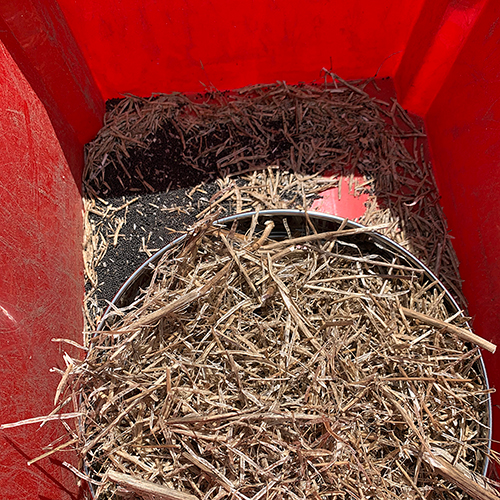
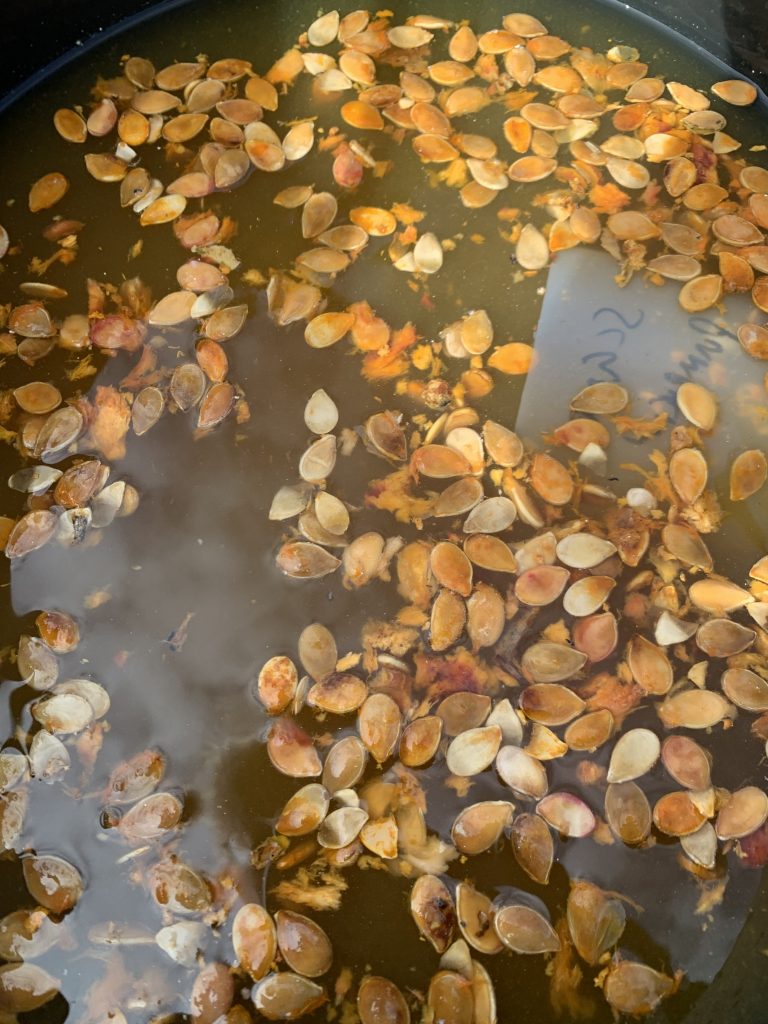
The next simplest form of winnowing is to use a large sieve to remove the bigger lumpy bits. Sometimes pushing the material through the large sieve can help to break up the pods and crushed plant material even further. This sieve just has to be big enough to let the seeds through – so the mesh needs to be slightly larger than the seed.
One simple often used technique to crush harder pods is to place the material all in a soft bag like a large pillow case and then stand on it, rub it by hand or even hit it with a stick. The seeds will usually fall to the bottom of the bag and then they can be sieved to further remove the chaff.
This can also be done by hanging the dry stems in bunches upside down with string and rubbing the seeds between two flat surfaces like sticks or just gloved hands with a container or fabric sheet on the ground underneath.
The next step is to use a fine sieve and have the dust fall through and away from the seeds. so this requires a mesh sieve that is slightly smaller than the seeds to make sure only the dust falls through.
You will often find that only two sieves are required to get to a very clean seed.
However problems can occur with the very small and often strangely shaped or spiky seeds like lettuce, poppies, brassicas or many herbs like oregano and basil – or when you get several types of seeds mixed together that you want to keep but separate.
To do a final clean and sort of these seeds it’s often useful to use an air movement winnowing process.
The simplest form of air winnowing is to drop the seed from a height onto a flat surface where they can be collected but having wind or air movement from a fan blow the lighter material sideways away from the collection area. This can be as slight air movement as blowing with your mouth into a bowl to remove dust. Or you can use fans and vacuum cleaners ( if you are brave enough) to create the air movement.
Commercial air winnowing systems have been developed over time to separate commercial crops like wheat, corn, peas and mustard seeds. Some of the grading of crops use wind based systems like this to also separate and grade seeds into different weights and qualities.
Example of a commercial large sized winnowing machine used by small scale seed companies.

You can make your own mechanical winnower by playing with these known techniques.
There are small winnowers available for removing chaff from bird seed.
There are also plans available online to enable you to make your own. The plan designed and developed by Real Seeds UK is widely used.
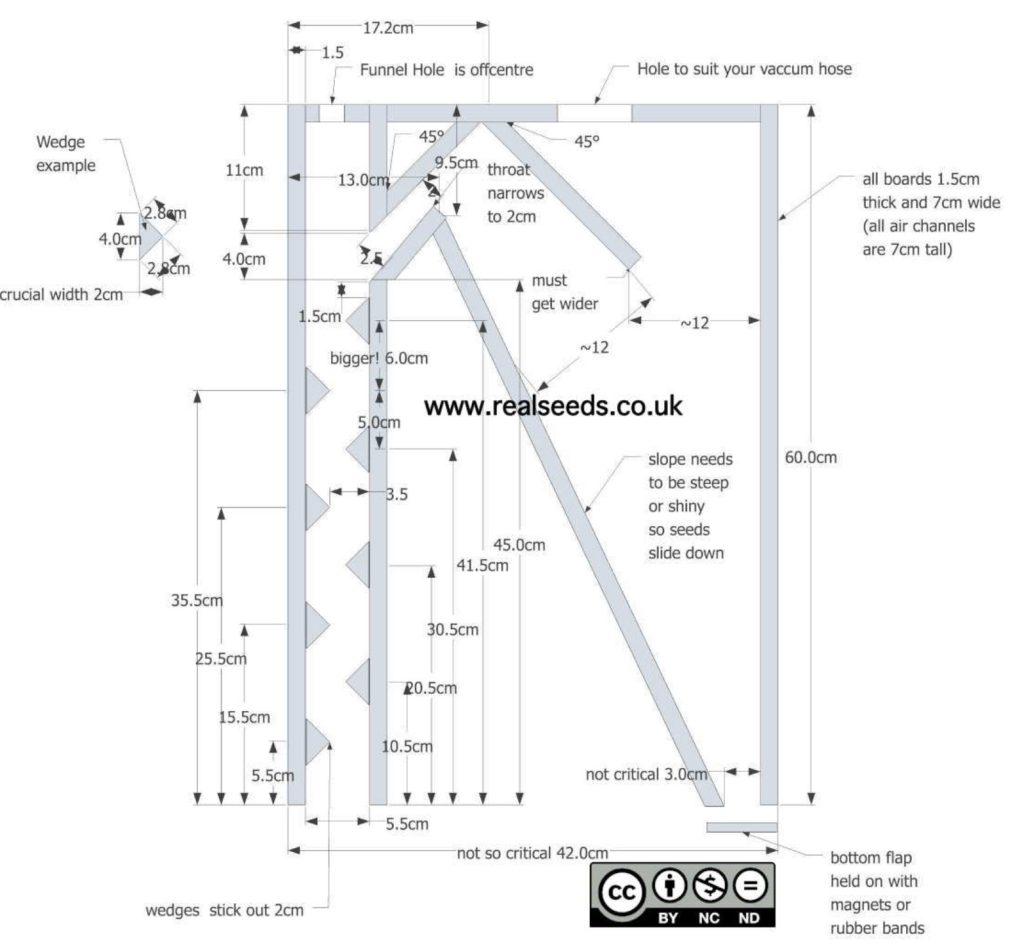
Real Seeds UK – https://www.realseeds.co.uk/seedcleaner.html
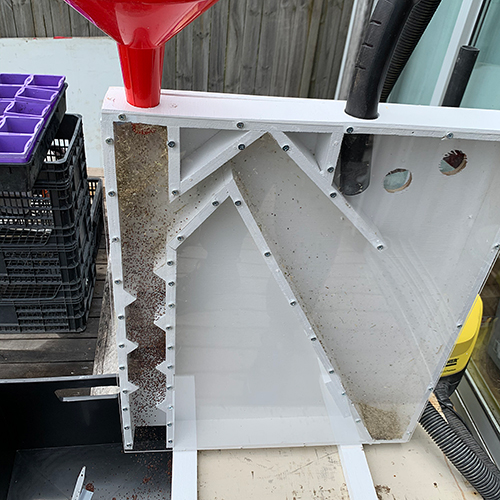
This is a slightly altered build based on the RealSeeds UK plans.
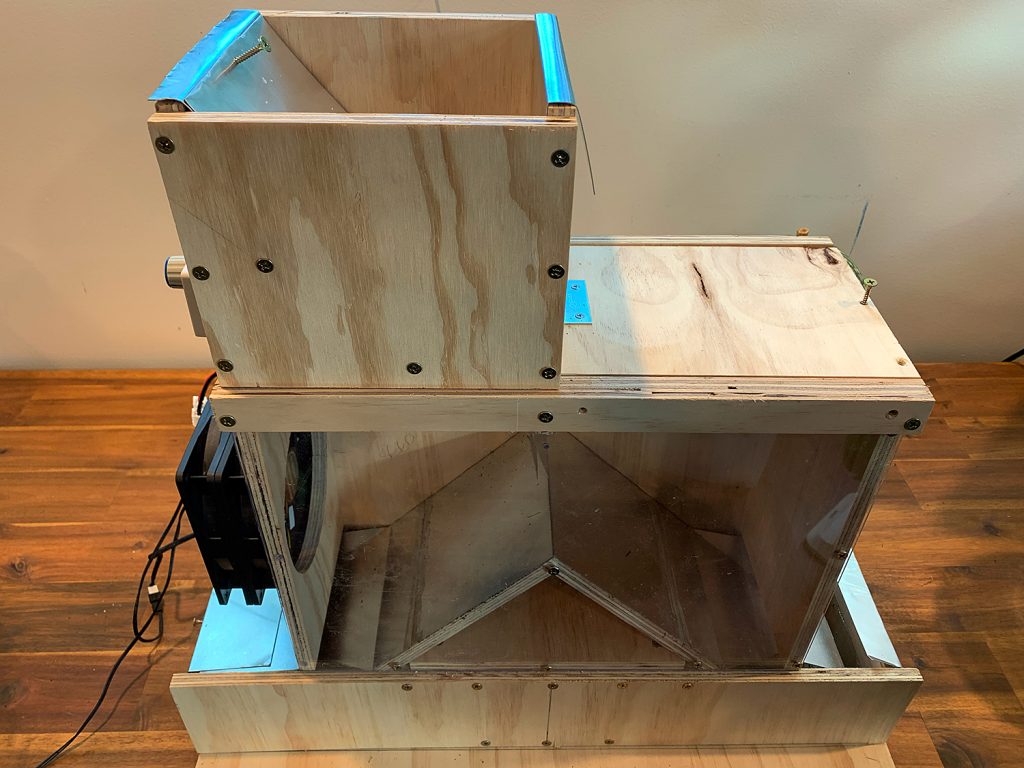
This is a simple custom air winnower using a small computer fan that is speed controlled to filter very fine seed.
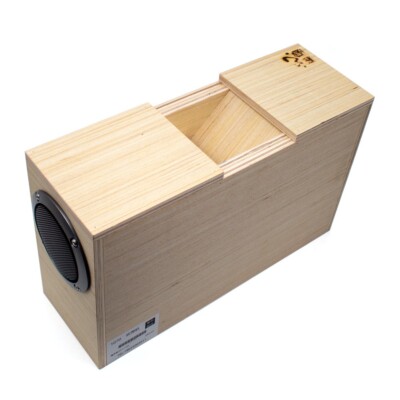
This is a commonly available bird seed air cleaner & winnower made with plywood.
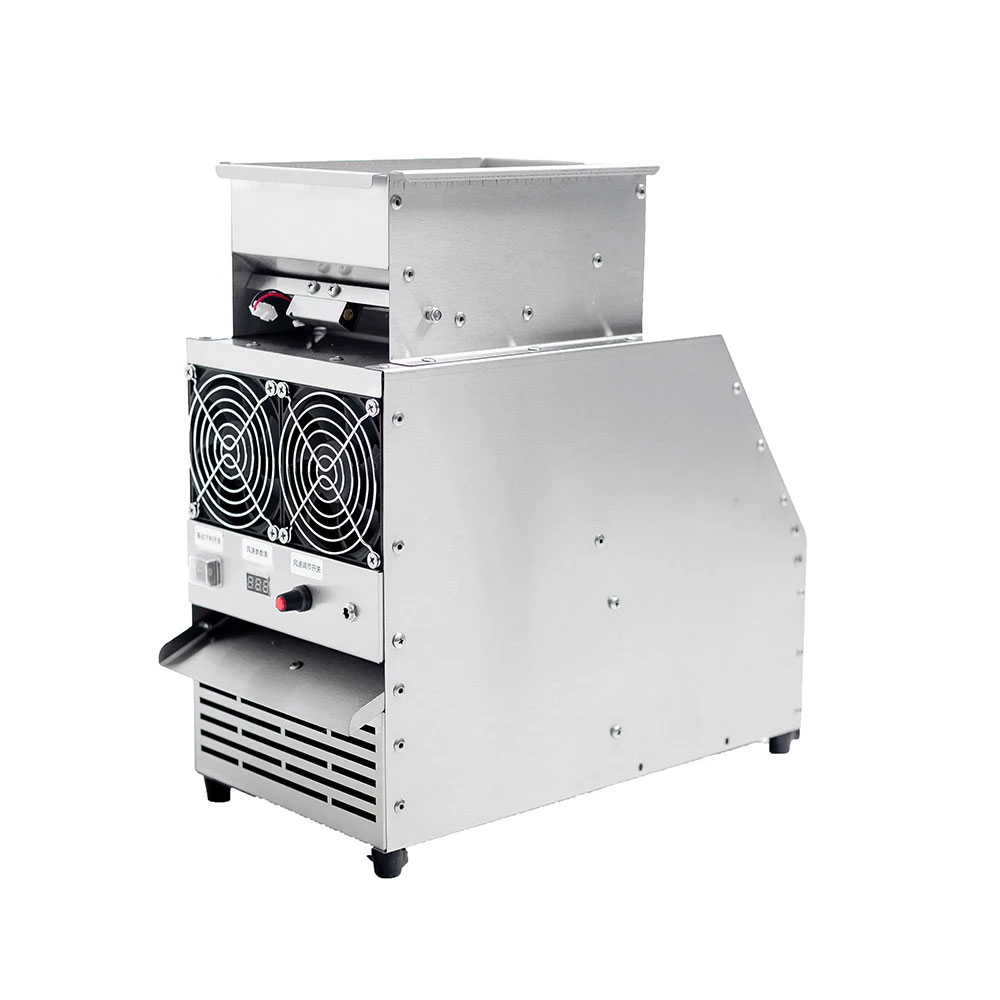
This is a commonly available metal air cleaner & winnower used for separating small batches of edible seeds like mustards and rice.
